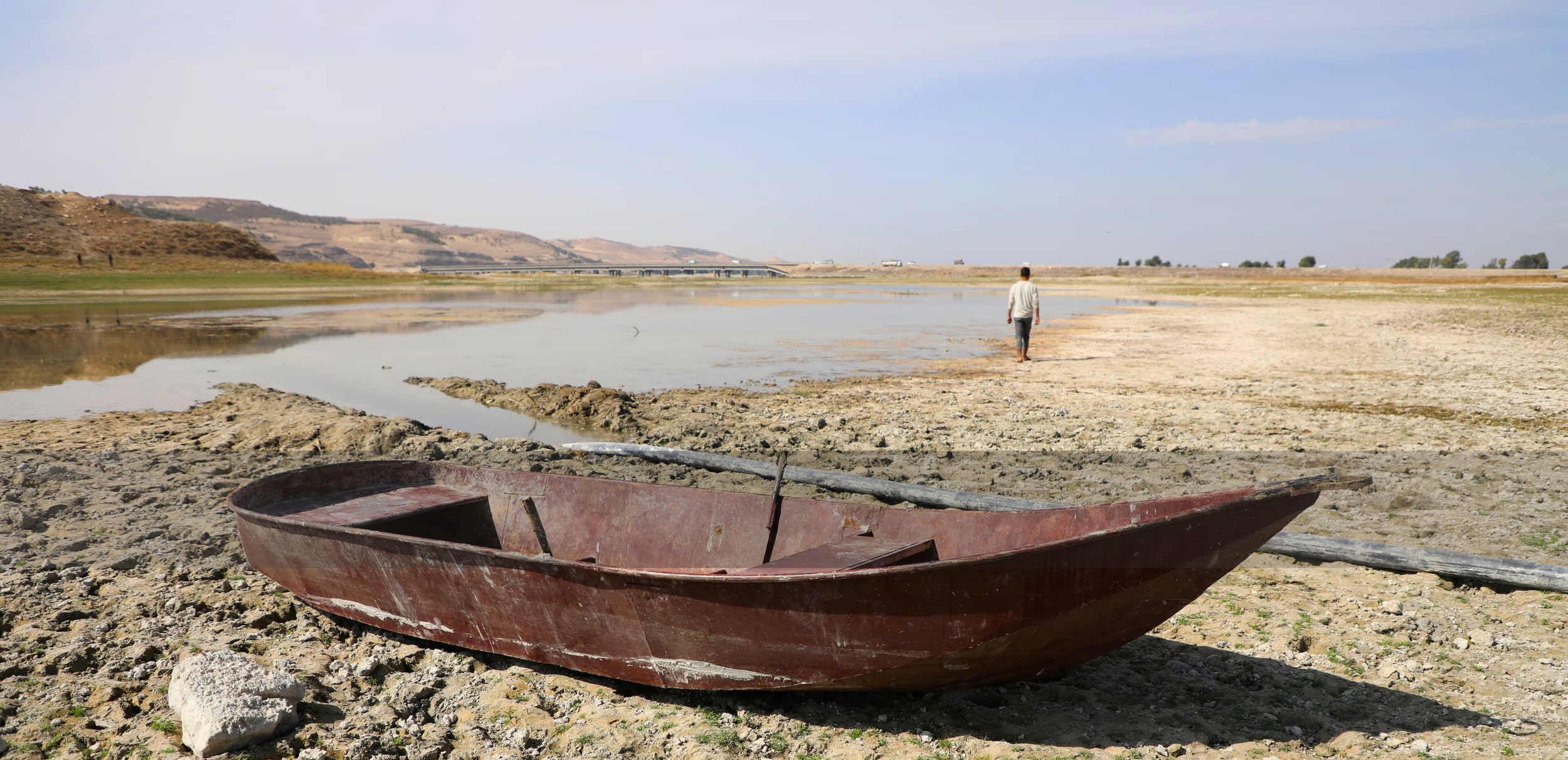
Rethinking Water Governance:
Climate Adaptation Strategies for the MENA Region
By Malak Altaeb
21 August 2025
The Middle East and North Africa (MENA) region is among the most water-scarce in the world, characterized by arid and semi-arid climates and home to 16 of the 25 most water-stressed countries globally. Despite hosting over 6% of the world’s population, the region possesses only around 1% of its renewable freshwater resources. This severe scarcity is further compounded by conflict, climate change, rapid population growth, and socio-economic pressures. What was once primarily an environmental and service provision challenge has now escalated into a multidimensional crisis—threatening regional stability, food security, human development, and long-term economic sustainability.
The Inheritance of Drought
Despite the gravity of the challenge, many countries in the region remain wedded to outdated water planning approaches established decades ago, with governments continuing to view water resources through a narrow lens that prioritizes extraction and expanding supply over sustainable resource stewardship.
For instance, more than 11 countries in the MENA region rely on groundwater aquifers to meet their growing water demand, with several—such as Libya, Saudi Arabia, and Oman—doing so at an unsustainable rate.
As countries in the region developed water policies aimed at enhancing food security and expanding agricultural production, most of their groundwater aquifers were heavily exploited for agricultural and domestic use, often with little regard for demand management or the long-term impact on non-renewable fossil aquifers.
In addition, agricultural production across the region relies heavily on inefficient irrigation methods. This is particularly evident in Egypt and Iraq, where most agricultural activity depends on flood irrigation systems that have proven resistant to reform.
In Egypt, despite a relatively well-developed water infrastructure, institutional conflicts have become a major barrier to progress. Ongoing jurisdictional disputes between the Ministry of Irrigation and the Ministry of Agriculture over agricultural water policy have prevented the adoption of two critical adaptations: transitioning to demand-driven crop selection and implementing water-efficient irrigation practices.
Many MENA countries have prioritized costly dam construction and large-scale water infrastructure while neglecting effective demand-side management. For example, despite significant maintenance budgets, two of Libya’s 18 outdated and poorly maintained dams collapsed during Storm Daniel after years of neglect. This tragic incident, which left tens of thousands dead and missing, was a stark example of how the region's water policies fail to adequately address the climate challenges ahead, underscoring the lack of a coherent, long-term vision and highlighting the disconnect between policy planning and effective implementation.
A fisherman walks across a dry patch of land after drought in the marshes of southern Iraq, Dhi Qar province. Credit: Associated Press / Alamy Stock Photo.
Foundations Built on Sand
Additionally, while many countries in the region have developed water sector initiatives and strategies, weak governance structures and ineffective institutions continue to hinder the implementation of equitable and sustainable water management. A lack of accountability and transparency within national water authorities has led to ineffective, ad hoc decision-making.
Libya exemplifies this challenge. The absence of a centralized water authority has resulted in a fragmented system, with multiple entities independently responsible for water management. This institutional fragmentation has contributed to increased water insecurity and deepened inequalities in access across the country.
Another challenge facing the region is the lack of awareness around the importance of using non-conventional water resources, such as treated wastewater. Demand-side management also remains limited.
Despite agriculture accounting for approximately 85 percent of the region’s water consumption, countries like Egypt continue to cultivate water-intensive crops such as wheat and rice. Furthermore, some regional governments approach water primarily through a security lens, with narrowly defined mandates that often overlook climate adaptation and long-term sustainability.
Abundance does not guarantee accessibility or equity; when paired with ineffective management and neglect, it can lead to over-exploitation of existing resources, their eventual depletion, and long-term deterioration of quality.
Beyond the Oasis
In the Gulf region, many countries have developed roadmaps to address climate change and its impact on water security by diversifying their water sources, particularly through the expansion of seawater desalination. In Saudi Arabia, the water sector underwent significant changes in 2023, with desalinated water production increasing by 31%, now accounting for roughly half of the country’s distributed water supply. The United Arab Emirates ranks second in the region, after Saudi Arabia, in terms of desalination capacity. According to the UAE’s official data portal, the country’s total installed desalination capacity in 2022 reached approximately 6.28 million cubic meters per day.
Despite this progress, Gulf countries continue to face persistent challenges in water pricing and conservation, requiring policies that address both global trends and long-term social implications. Abundance does not guarantee accessibility or equity; when paired with ineffective management and neglect, it can lead to over-exploitation of existing resources, their eventual depletion, and long-term deterioration of quality. For the MENA region, desalination should be integrated into a comprehensive climate adaptation strategy rather than serving as a standalone solution. It must be fully integrated into policy frameworks that prioritize demand management alongside supply diversification.
Water scarcity should be reframed not solely as a crisis but as an opportunity to reform water and agricultural policies through adaptation-focused approaches that place social justice at their core. This can be achieved by addressing water demand while safeguarding existing resources—for example, expanding water reuse in agriculture, promoting sustainable farming techniques, and supporting locally developed, low-cost smart agriculture solutions that help farmers adapt to the impacts of climate change. Ultimately, effective climate adaptation in the MENA region requires placing water at the heart of planning processes, transforming scarcity into a driver for long-term solutions that strengthen resilience and improve the well-being of communities across the region.
Malak Altaeb is an Associate Fellow at the Carboun Institute.




